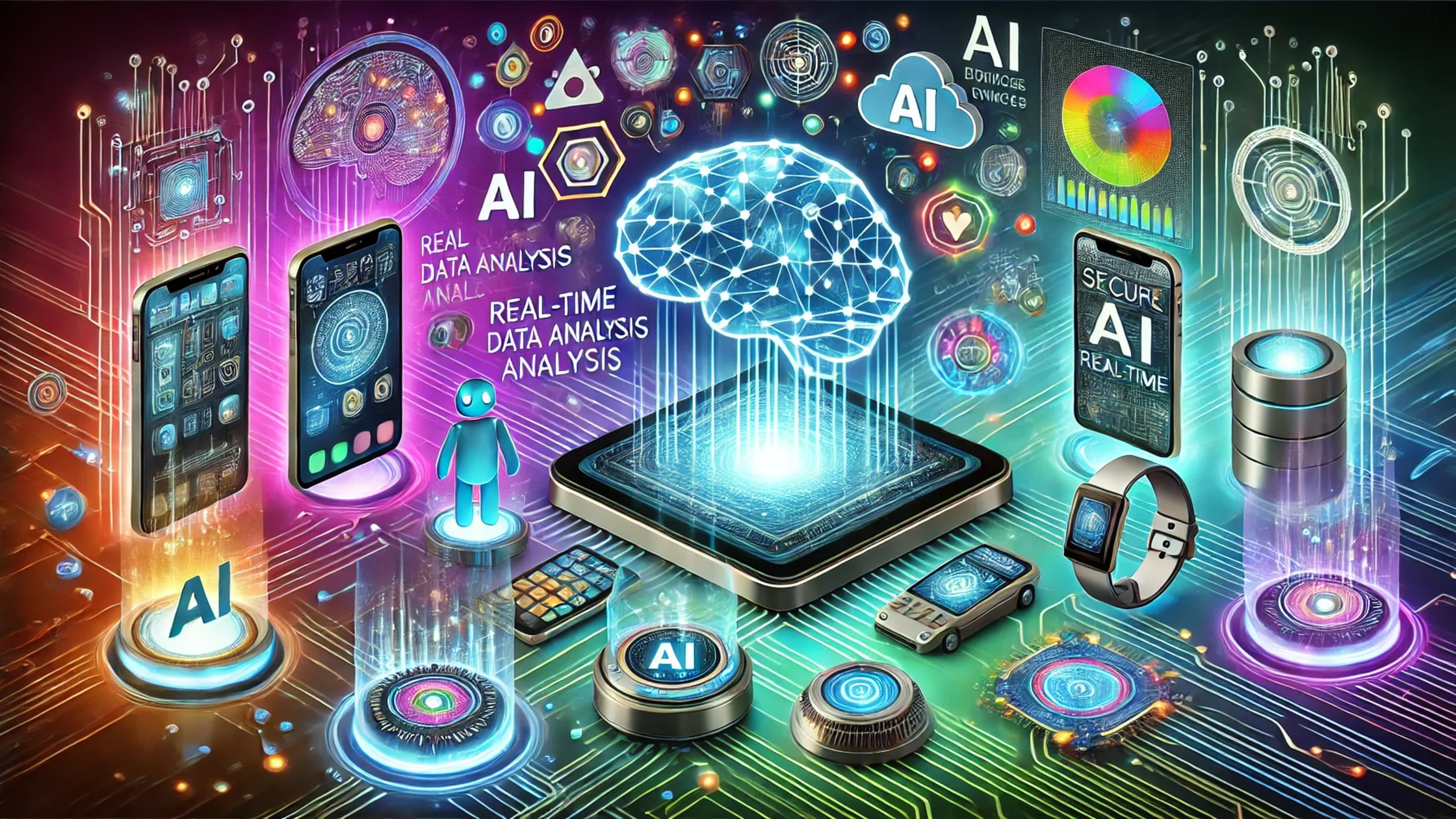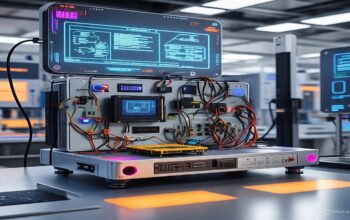It is only in the last few years that mobile edge computing has emerged as a revolutionary technology that enables data processing on mobile devices to take place quickly and efficiently. By bringing the power of computation closer to the user with a mobile edge, it minimizes latency at the same time as making room for real-time decision-making capability in AR applications, autonomous vehicles, and devices with IoTs. At the very heart of the revolution are artificial intelligence agents who are being plugged into edge mobile devices at a tremendous pace. The AI agents would seek to perform complex functions on such edge devices—smartphones and wearables along with other edge devices to provide access for the seamless user experience using minimal or no cloud infrastructure.
However, AI agents’ integration into mobile edge devices produces a chain of major challenges that must be overcome for this technology’s full benefit. We will explore these challenges in this blog post and discuss the possible solutions that can help overcome them.
Covered Contents
ToggleThe Rise of AI Agents on Mobile Edge Devices
The federated learning design for AI models may improve data privacy. Federated learning is the learning technique in which an AI model gets trained on different devices without shifting the data to a central server. Therefore, in federated learning, the data is not moved out of the device and not shifted to the server, the chance of breach of data decreases, and the chance of privacy regulation is high. Mobile devices equipped with AI agents can analyze data locally and provide instant responses without the need to constantly communicate with distant cloud servers.
The growing demand for real-time processing and capabilities of mobile devices propel the adoption of mobile edge computing and AI agents. Presently, a smartphone and wearables are supported by processors, advanced sensors, and fast internet connections which can handle AI-based applications such as speech recognition, image processing, and natural language understanding directly on the device. This improves user experience besides significantly reducing the bandwidth that is needed for cloud communication, which further helps in curbing some of the issues related to congestion and latency in networks.
Key Challenges in Building AI Agents for Mobile Edge Devices
While the potential for AI agents on mobile edge devices is immense, there are several challenges associated with their development and deployment. These challenges span hardware limitations, energy consumption, model optimization, and security concerns. Let’s take a closer look at these issues:
1. Limited Computational Power
The edge devices typically include mobile, and wearables, and have considerably fewer computing powers than cloud computing central servers and even the centralized edge computing data centers. A significant processing capability is needed by AI models, especially deep learning models, to process training, inference, and decisions in real time.
This limitation becomes particularly apparent when using complex AI algorithms such as CNNs or RNNs, which require significant computation and memory. Mobile devices are often limited by smaller processors, limited RAM, and less storage capacity, which can lead to slower performance and less efficient AI processing.
Solution:
To overcome this challenge, AI models are optimized for mobile edge devices through the use of quantization, pruning, and distillation techniques. Quantization reduces complexity without losing a lot of precision. Pruning is a reduction in unnecessary connectivity between neurons inside a neural network, thus creating a lighter, faster model. It brings the precision down for model weights, thereby obtaining smaller and faster models on which to run; it’s able to fit such models onto lower-powered mobiles. AI Model Distillation essentially involves transferring information from a much larger complex model to a lighter, more agile one that facilitates high-performance outcomes without computational overkill.
Additionally, mobile-specific hardware accelerators such as AI chips and neural processing units (NPUs) can be leveraged to offload AI computation, providing a boost in performance without draining battery life.
2. Energy Consumption
Another major challenge in developing AI agents for mobile edge devices is the high energy consumption needed for AI processing tasks, particularly those that involve real-time data analysis, which are very resource-intensive and can easily drain the battery of a device. For mobile edge devices to be useful and practical, it is important to develop solutions that reduce energy consumption without compromising performance.
Solution:
To address this problem, AI models need to be optimized for energy efficiency. One approach to reduce the computation frequency is by edge caching or offloading techniques. Devices can cut down energy consumption by storing frequently used data on the device or sending less critical tasks to the cloud for processing. Further, the mobile edge device can benefit from energy-aware scheduling by dynamically adjusting the processing load depending on the battery level of the device, ensuring the AI agent functions optimally and does not consume the battery in advance.
Low-power AI architectures are also under development, such as neuromorphic computing that emulates the human brain’s energy-efficient processing. This is a very exciting area of research that could help power AI agents on mobile devices with significantly lower energy usage.
3. Data Privacy and Security
The AI agents in the mobile edge device handle sensitive information such as personal health information, location data, and user preferences. With increasing data privacy and security concerns, protecting user information by AI models is of prime importance. Mobile AI agents should abide by rigorous privacy laws like the GDPR and ought to process data with acceptable levels of security without exposing vulnerable areas.
Solutions:
AI models can be designed in a federated learning way to enhance data privacy. Federated learning is an approach to learning wherein training of the AI model occurs on multiple devices without moving the data to a central server. Thus, the user’s data will not leave the device and not get transferred out to the server; hence the possibility of a breach of data is reduced, and the chance of it following the privacy regulation increases.
Another approach would be encryption and secure multi-party computation, which would mean that any data that was shared between devices or to the cloud was encrypted and that it was processed securely. An AI agent could also be empowered with built-in anomaly detection systems that notice potential security issues or weaknesses in the device.
4. Real-Time Decision-Making
Real-time decision-making capability is one of the most persuasive advantages of AI agents on mobile edge devices. However, it is a challenging task to reduce latency without trading off accuracy. Real-time decision-making requires rapid processing and response times, which are often disrupted by network latency, limited computation power, and sophisticated algorithms.
Solution:
Edge intelligence plays a serious role in the hurdle of real-time decision-making. By optimizing the AI model so it can almost do most of the computation on the device itself, there is less dependency on the cloud and faster responses. There exist some Edge AI frameworks, such as TensorFlow Lite, PyTorch Mobile, and ONNX Runtime, primarily designed to run AI models efficiently on edge devices while maintaining real-time performance.
Further, AI models can be updated and improved continuously using online learning and adaptive algorithms, so that the model can learn from new data and change its predictions in real-time.
Conclusion: Unleashing the Potential of AI Agents
The creation of AI agents for mobile devices at the edge is an incredibly complex and challenging task, but the potential rewards are enormous. We can develop AI mobile devices that are faster, smarter, and more efficient through the overcoming of challenges such as limited computational power, excessive energy consumption, security concerns, and real-time decision-making needs.
With innovative solutions for model optimization, federated learning, energy-efficient architectures, and edge AI frameworks, we could tap into the great powers of AI to present users with enhanced experiences on their mobile devices. More breakthroughs continue to be added in this field of mobile edge computing, all the way towards forming the next generation of intelligent mobile edge devices.
Read More:


